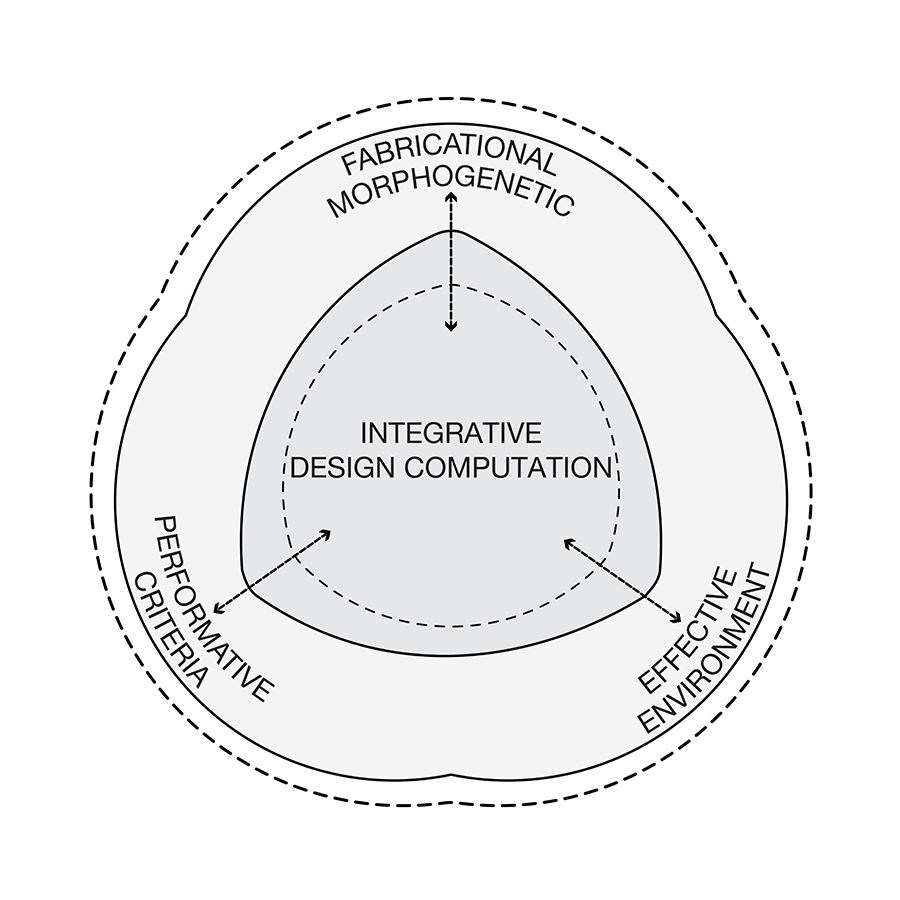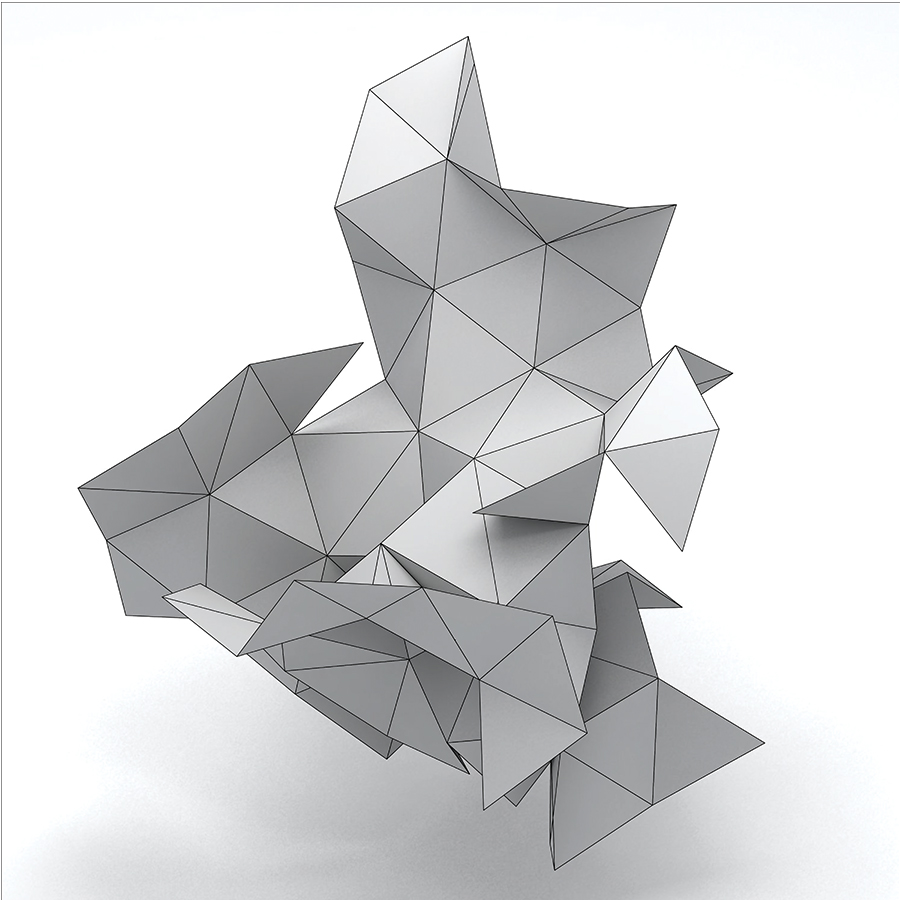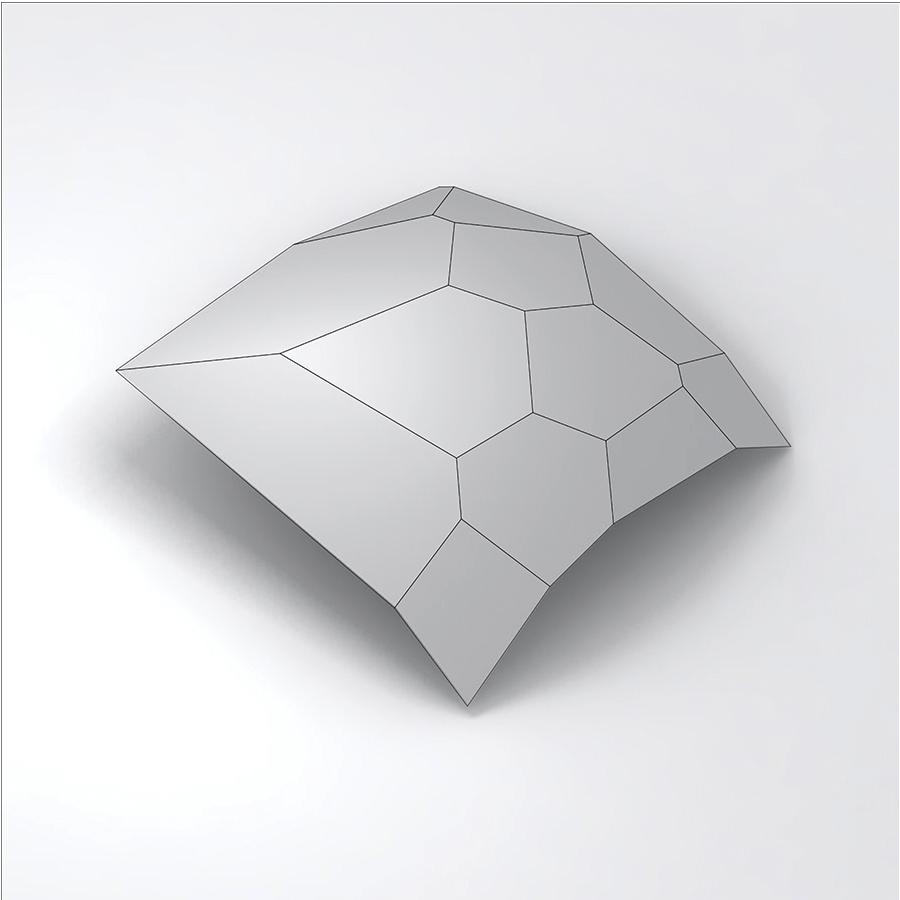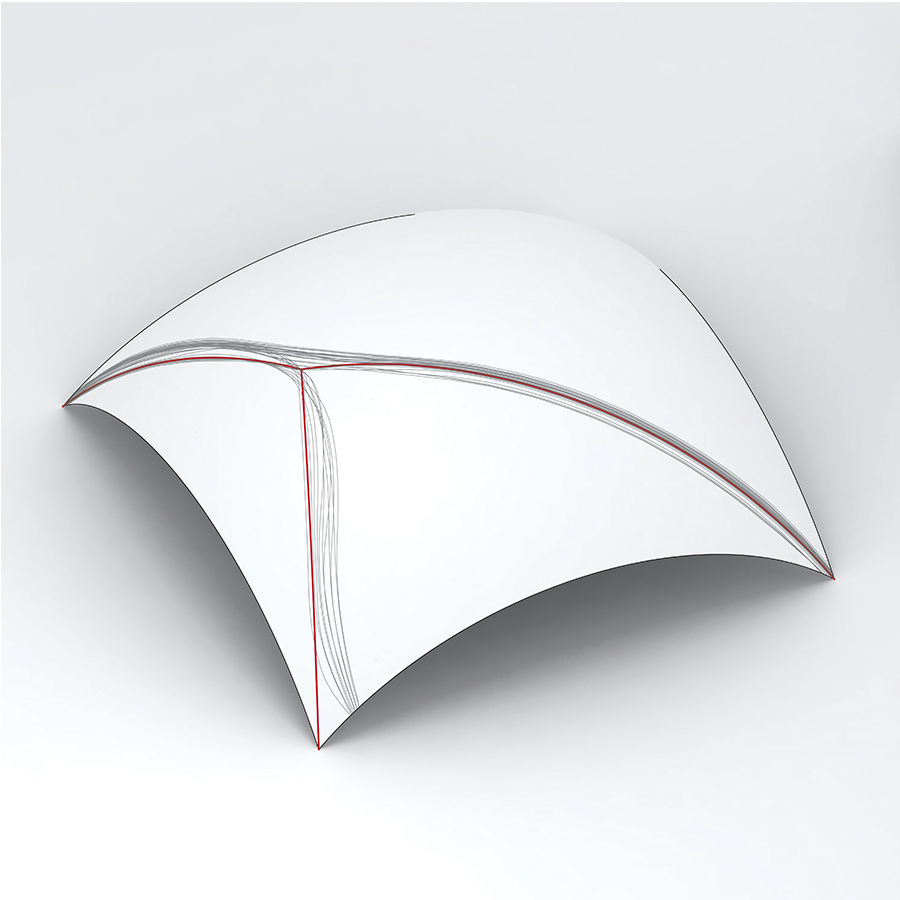Behavioral Integration of Design Computation and Construction Methods
Description
Agent-based systems have been widely investigated in simulation and modeling. Particularly in social sciences, these systems have used an effective computational method to simulate and model human behaviors to achieve a better understanding of their behaviors in response to their surrounding environments. In the field of architecture and urbanism, the basic concepts of agent-based systems like Cellular Automata (CA), Game of Life (GA) and Swarms have been widely used to explore spatial organization, navigation and circulations, infrastructure planning, and the organization of isolated structural systems.

In contrast, the main aim of my studies includes investigating the possible integration of materials, fabrication, and construction methods through generative agent-based algorithms for architectural design. In this study, several aspects of an integrative design computation can be defined as separate drivers, such as Fabricational Morphogenetics, Effective Environments and Performative Criteria, coupled together to arise a computational morphogenesis. In this manner, Behavior-based systems along with Constrained Generating Procedures (CGP’s) which are informed by material characteristics and fabrication constraints are studied to integrate the discrete design processes into a generative agent-based design tool.
Behavioral Design Computation: The Assembly of Polygonal Surface Structures

This research investigates the development of an agent-based design method as an integrative design tool for polygonal surface structures. The aim of this research is to develop a computational tool that self-organizes the emergence of polygonal surface structures from interaction between its geometric constituents. The research focuses on the ethological level of morphogenesis that is relevant to the animal or insect societies, whereby agents mediate the material organizations with environmental aspects. Meanwhile, this study investigates behavior-based approaches as a bottom-up system to develop a computational framework in which the lower-level elements constantly interact.
Generative Design Integration: The Panelization of Free form surface for plywood structures

This research focuses on transferring robotic fabrication principles of the plate structure morphology into the agent’s attributes. Although in modeling of the complex system it is not possible to reach a perfect abstraction; it is possible to find the general behavior of the plate structure. This behavior will form the basis of the bottom-up mechanism. The mechanism that is associated with fabrication space considers material characteristics and manufacturing constraints of plywood plate structures via developing a theoretical morphospace. Exploring the morphospace via agent-based system enables to directly generate producible building elements.
Coalescing Design and Fabrication: The Fiber Placement on the Formwork

This research proposes a method to integrate the robotic fabrication processes into the early stage of composite design, by computing the fiber toolpath with respect to the agent-based system. The agent-based system facilitates the integration of materialization and fabrication processes to develop a multi-performative shell structure. In the context, the main objective of this research is to develop a computational tool for generating the toolpath of fiber placement, which is applicable for the robotic fabrication in architectural design.
Author and Image Credit
Ehsan Baharlou
Related Publications
Baharlou, E. (2017). Generative agent-based architectural design computation: Behavioral strategies for integrating material, fabrication and construction characteristics in design processes (ICD-1) [Doctoral Dissertation, Institute for Computational Design and Construction (ICD), University of Stuttgart]. (ISBN: 978-3-9819457-0-6; DOI: 10.18419/opus-9752)
